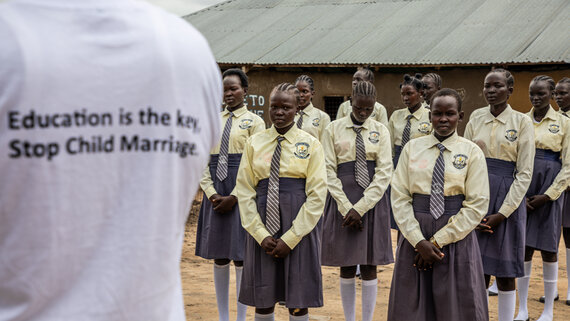Education Sectoral People in Needs
Education Sectoral Severity of Needs
Needs
Approximately 2 million children and adolescents between 6 and 17 years old (53 percent are girls), along with 1 million children between 3 and 5 years old, encounter significant obstacles in accessing education, including early marriage and GBV, especially for girls. The primary focus for 2024 is to enhance access to safe and conducive learning environments for vulnerable groups, particularly IDPs and returnees. This includes catering to the educational needs of over 311,000 IDPs, 1,535,000 resident communities, and 189,000 returnees. Another critical issue is the scarcity of qualified teachers, with one-third of teachers lacking training, resulting in high pupil-teacher ratios with an average of 93:1. In 2024, nearly 41,000 teachers, primarily in hard-to-reach areas, will require support with teaching materials and lifesaving incentives to ensure quality education.
Moreover, learning materials for students, including those in early childhood education, need to be increased, with textbook ratios at 8:1 for primary students, far below the recommended 1:1 guideline. Providing a secure and enabling learning environment and facilities, with a particular focus on gender-sensitive settings and segregated water, sanitation, and hygiene (WASH) facilities, remains a pressing concern. Notably, children with disabilities, especially those residing in crisis-affected areas, continue to receive inadequate support for quality education.
Education Sectoral People Targeted
Response
The Education cluster is committed to enhancing equitable access to secure, protective, and high-quality education to empower individuals for more prosperous lives. This commitment is channeled through the cluster strategic objectives that promote accessibility, quality, and building robust local capabilities for sustainable education. The cluster employs a multi-sectoral approach, collaborating closely with other clusters such as WASH, Child Protection, GBV, and Nutrition to address diverse needs efficiently. Despite an anticipated funding cut of up to 50 percent, the cluster is dedicated to prioritizing the most vulnerable individuals, including 748,000 children and about 7,500 teachers out of over 2 million people in dire need of education services. A particular focus is directed towards the returnees from Sudan, aiming to provide them with life-saving educational services. The remaining target will be determined by the severity of needs, intersectoral prioritization, and geographical targeting, focusing on areas rated as IPC Phases 3 and 4.
Regarding response modality, the cluster primarily relies on in-kind support due to the scarcity of educational materials, mainly due to dysfunctional markets and the limited purchasing power of the population. However, when feasible, the cluster will explore cash-based modalities, particularly for teacher incentives and promoting girls' education through the Girl Education South Sudan program. The cluster will leverage the strengths of local Government, national organizations, and development actors to achieve all three strategic objectives. This will involve joint planning, prioritization, and implementation, fostering efficiency while maintaining a focus on the most vulnerable population groups.
"I am so happy that I can go to school here."
- 8 year old girl displaced to Malakal

Bor South County, Jonglei State, South Sudan
Students of poetry and drama club read poems about the ending of GBV and child marriage at Saint Andreas High School.
OCHA/Alioune NdiayeMonitoring
The Education cluster, responsible for emergency education coordination, utilizes a robust monitoring approach. The 5W matrix and ActivityInfo tool offer insights into children's needs and challenges in crises. Real-time data is collected through sub-national cluster focal points and an online tool, facilitating prompt responses to emerging issues. The cluster maintains situational awareness when collaborating closely with key stakeholders, including the ICCG and national actors. Open dialogue with affected communities enhances humanitarian responses' overall quality and effectiveness. The cluster will ensure adaptability and strategy refinement through diligent information management, nationwide needs assessments, and an evidence-based approach to address evolving vulnerabilities among children.
The detailed cluster strategy can be found online https://reliefweb.int/report/south-sudan/south-sudan-education-cluster-strategy-2023-2025

